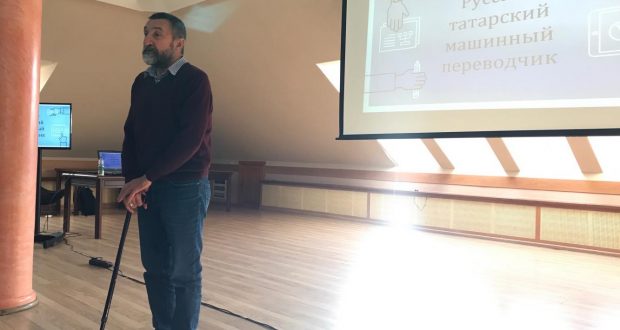October 28, 2019
A new Russian-Tatar translator Tatsoft was presented in Kazan. It is able translating large texts of up to 800 characters and single words with equal success from both Russian and Tatar. Now in his memory there are 15 million words in each language and about 1 million pairs of sentences. In addition, it is able to voice the results of his work.
Tatsoft has been developed by scientists from the Institute of Applied Semiotics of the RT Academy of Sciences. Aidar Khusainov is one of those who joined this team. He says that according to reviews and automatic measurements, their translator for Russian-Tatar is the best of what you can now find on the Internet.
– In terms of translation quality, Yandex is not even close to our version. There are special methods for evaluating the work of translators. According to them, our translator is somewhere 10 positions higher than Yandex. Therefore, we can say with confidence that among the Russian-Tatar language pair, this is the most advanced product, ” says Rinat Gilmanov, deputy director of the Institute of Applied Semiotics, assured one of its developers.
KazanFirst decided to test the work of the translator to make sure of everything personally. It turned out that the service is really worthy of praise. Bilingual interface, high download speed, and most importantly – high-quality translation of texts without losing the meaning of the source. A certain advantage of the new translator is considered to be that it is able to reproduce sentences in the maximum correct sense, despite grammatical errors in the first version. Pushkin’s poems, Absalyamov’s novel and news from the website of President of Tatarstan Tatsoft translates perfectly.
All this is possible due to the fact that the service operates on the basis of a neural network approach. Khusainov explained its essence as simply as possible so that everyone would understand: this is a certain program that learns from the data that scientists ask it. It masters any information and is able to relearn. Speaking very primitively, the neural network approach is almost like a human brain.

